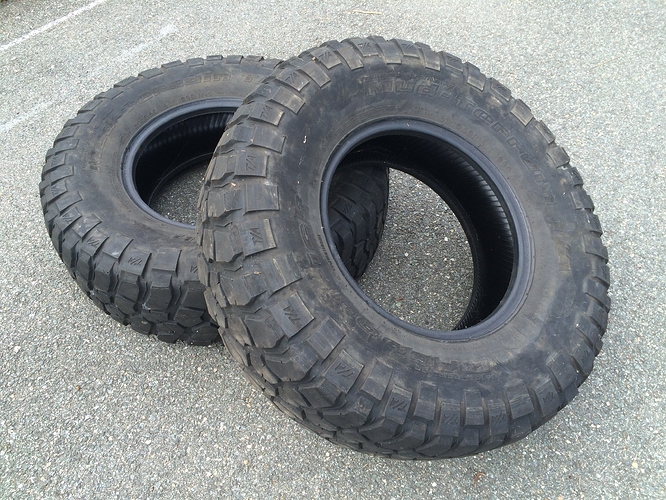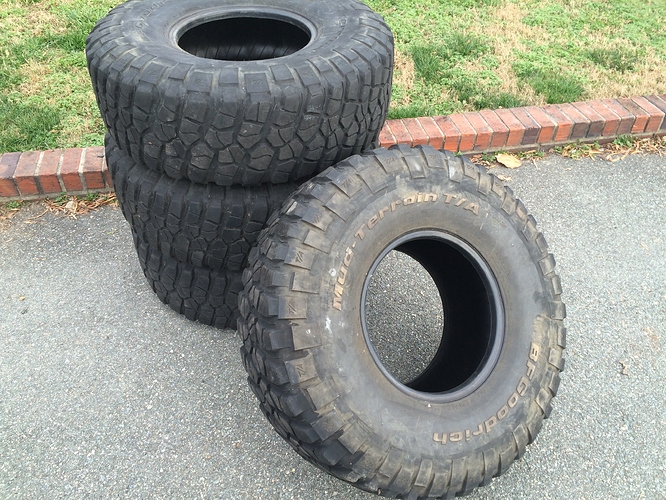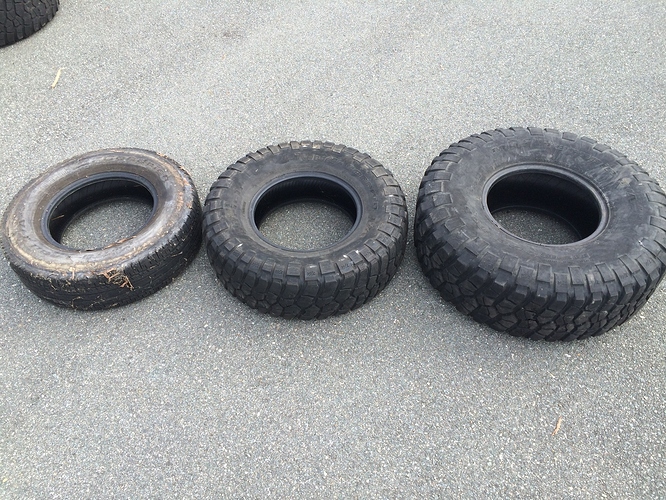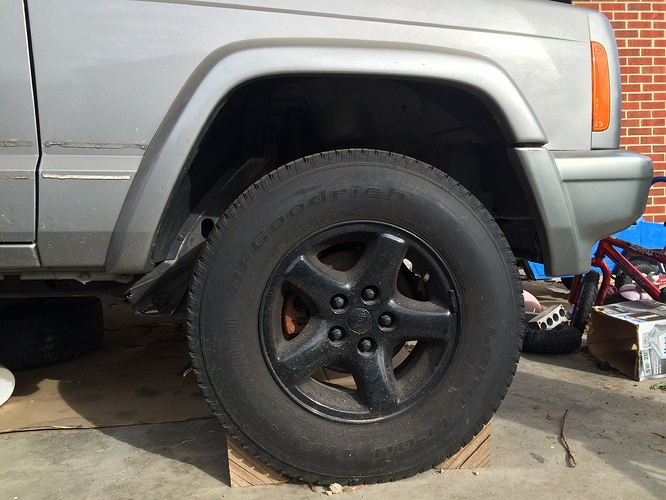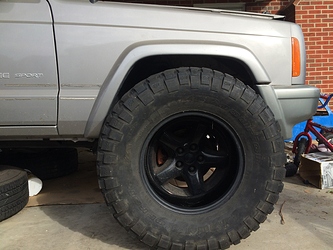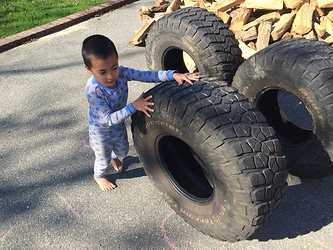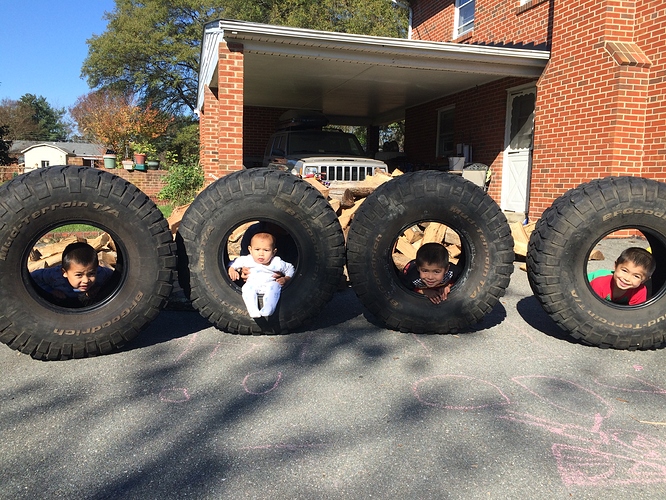2015 Randomly
Tires…
So I found these 31" tires for sale on Craigslist for a few bucks and decided to pick them up in the off chance that maybe I’d find two more later. After a few months of waiting I stumbled on these four…
35" BFG Mud-Terrains, again off Craigslist for a few shiny nickles. I knew when I got these that I had no intention of ever putting them on the Cherokee. I had no intention of going deep down the rabbit hole of additional modificatons it would require to run such large tires. I wanted them mainly as a visual aid before putting them back on sale later.
Here’s what the stock 29" tire looks like beside the 31" and 35".
The plan was to land somewhere between 31" and 33" on about 4" of suspension lift. But 35" tires look really cool, especially to little boys. They got a kick out of playing with these things for a few weeks before I resold them for a profit later that year.
I had enough sense to know then that the one area you didn’t want to cheap out on was in the rubber department. I’d buy some brand name quality tires eventually. In hindsight I’m glad I didn’t purchase any tires then, as will become more apparent soon.
